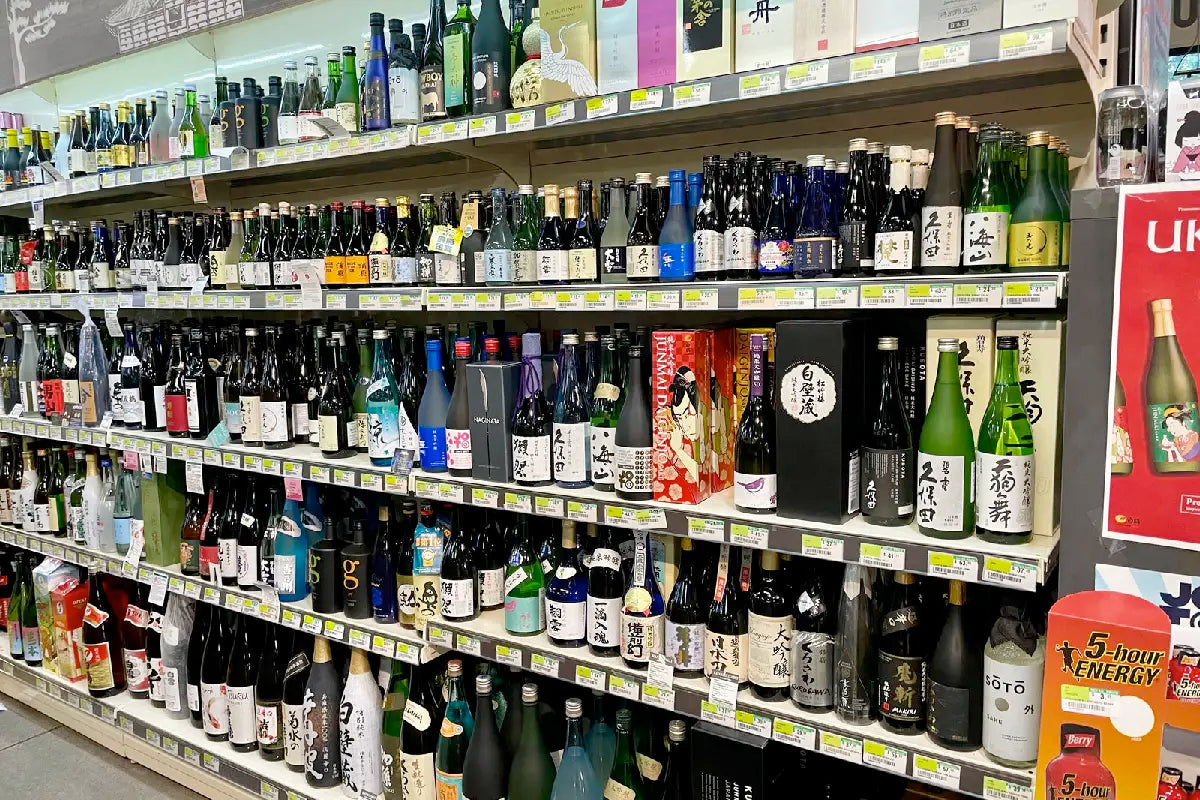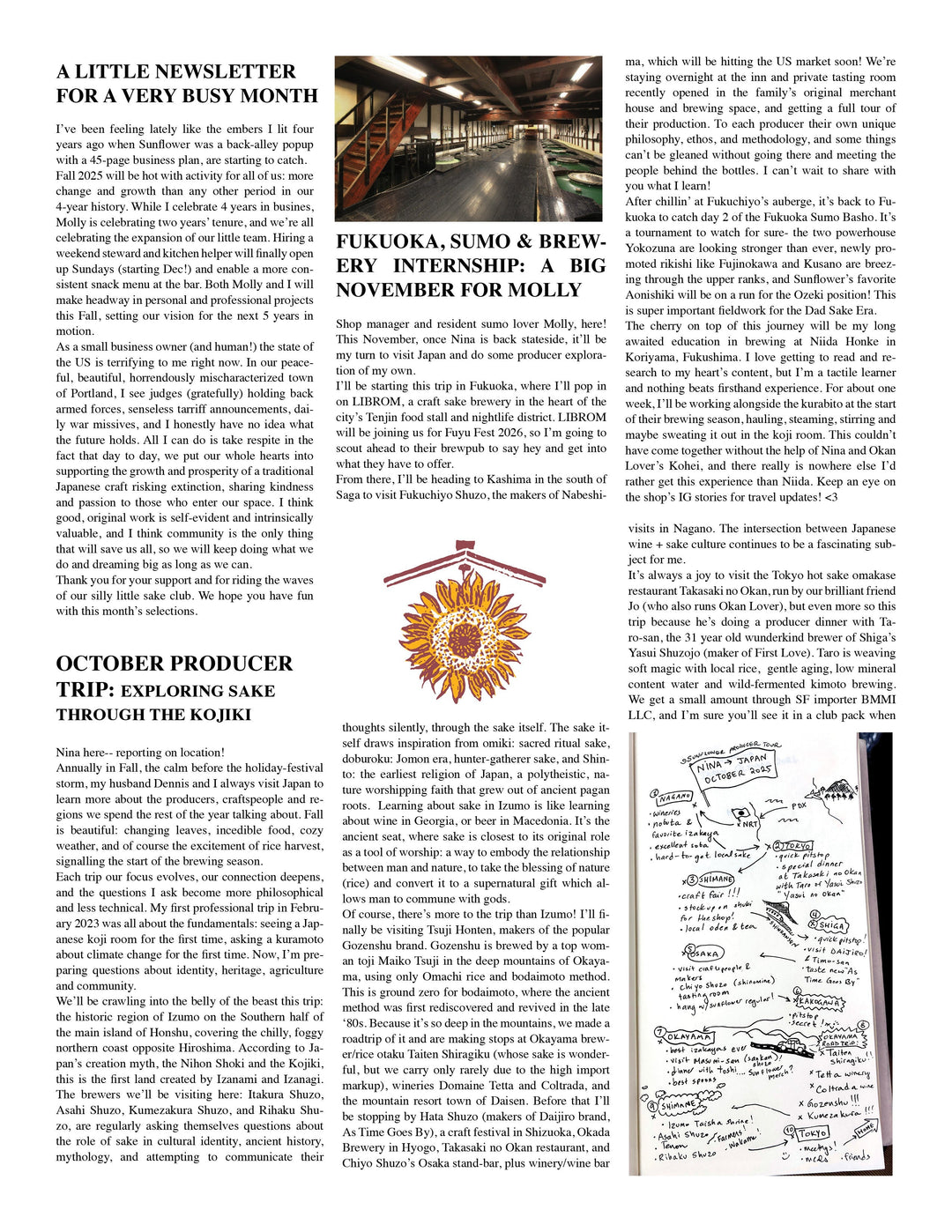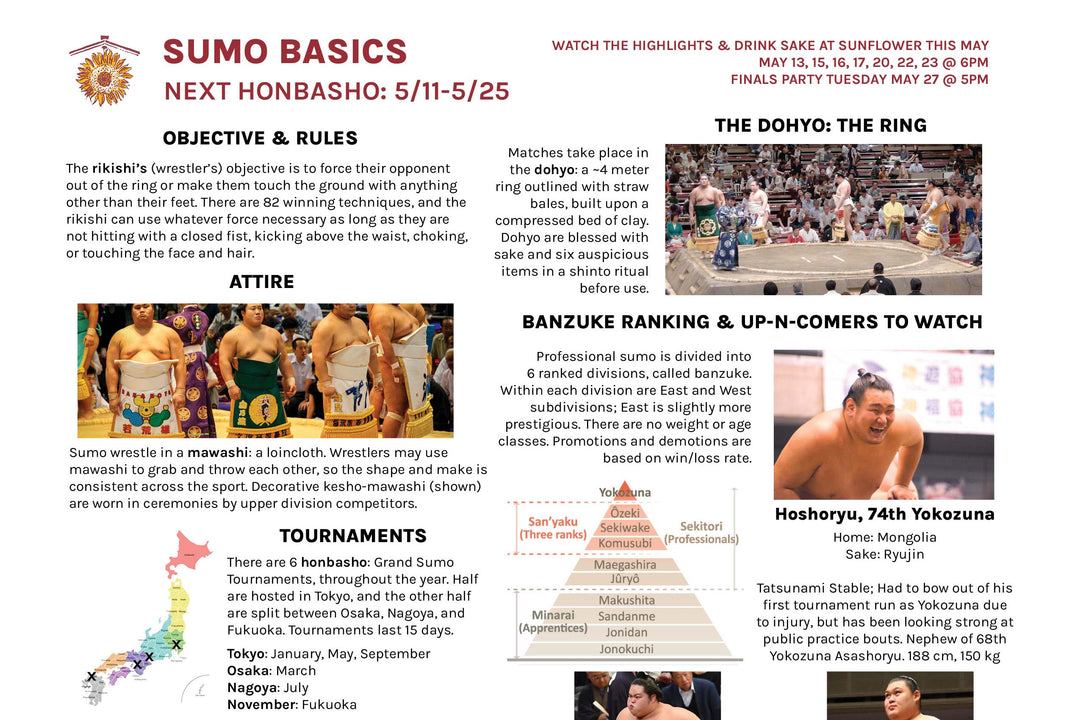An expert's advice for buying sake at your local grocery store

How do you choose a bottle of sake?
If you can see the bottle in person, the factors you should consider are:
1) the temperature it's stored in
2) sources of light
3) the bottling date
4) the style
The first two factors, temperature and light, are non-negotiable. The other two can be flexible, depending on the bottle.
1. Temperature
As for sake storage temperature, if the goal is to preserve the original flavor of the sake, the cooler the better.- >85F is far too hot. Sake will age quickly at this temperature.
- >75 is bad, and I would expect changes within a month or two.
- ~65-68F room temperature is good, I would expect changes within 4-6 months.
- ~50-55 cellar temperature is better, I would expect changes within 6-12 months.
- ~35-40 refrigerator temperature is best, and can keep flavor consistent for 12-24 months+.
Over time, sake undergoes maillard reactions between its proteins and sugars: the same reactions bread dough undergoes when baked in the oven. With time and temperature, sake's color will become more tan and golden, the flavor may become rough, and pretty floral/fruity aromas will disappear or taste "aged."
Sake ages much more slowly in a refrigerator than a warm environment, so the colder the storage, the slower its aging. Even a few days above 85 is enough to cause noticeable deterioration in most sake. So if you walk into a warm shop, a retailer without AC in Summer not storing their sake in a refrigerator, I would avoid the sake. If your retailer has AC but doesn't store their sake under refrigeration, consider their trustworthiness. At a grocery store, there's a good chance no one is keeping a close eye on the inventory. You don't have an experienced sake sommelier rotating bottles, managing stock, making sure namazake is kept cold, and tasting older bottles to confirm condition. In these situations, I strongly recommend sticking to the fridge or choosing your bottle carefully.
At Sunflower, I only stock 2-4 bottles deep on my shelves, keeping the rest in cellar or refrigerator storage off-site. We are extremely careful with inventory management, and open bottles frequently to double check condition. Because we keep 25-35 bottles open behind the bar at any given time, there's also an opportunity to taste before you buy.
2. Light
Sake is very sensitive to light. In my experience, nothing will ruin sake faster than direct sunlight! It's such a problem that I installed roll-up shades for my sake shelves at work to shade the sake whenever the shop is closed.
UV is the most destructive, but I've noticed that LED and fluorescent lights expedite aging too. So when you're selecting sake, try to choose a bottle that is in a shady spot away from light. This is a problem even if it's refrigerated.
3. Bottling date
Most bottles (~70%) will have a date somewhere on the label, occasionally the cap, that tells you when the sake was bottled and shipped. This isn't the production date but the shipping date, so theoretically the sake could be a few months or even years old once it was bottled. You can think of bottling dates as being a good indication of when the sake was deemed ready for consumption by the brewery. So any time that passes after that date, the sake is changing from its original (intended) taste. That's not always a bad thing, but if you don't have experience with aging sake then you should play it safe.
As a rule of thumb, it takes a minimum of 1-2 months, usually more like ~3-6 months, for sake to finish its journey to the US and on to store shelves. Therefore, if you see a bottling date of January and it's currently May of the same year, that's really quite fresh here! If you see a bottling date from 12 months prior, as long as it was kept at a cool temperature and away from light, it's probably still delicious. Again, it's a question of the retailer's trustworthiness. If it's a grocery store in a small rural town with bottles collecting dust, I'm going to choose the youngest bottle I possibly can!
At my shop, I have a hard cutoff date of 18 months regardless of storage conditions. At 12 months, I start to watch the flavor more closely. If the distributor stores their product at refrigerator temps, it's probably still delicious and fresh at 12 months...but if they rely on cellar temperatures for storage, I may refuse to buy anything older than a year.
Once a bottle reaches 18 months of age, unless it's a style that benefits from aging, I start keeping a very close eye on its flavor and sometimes apply a discount as well. This is the care you can expect behind the scenes when you buy from a trusted retailer. Otherwise, you have to keep tabs yourself.
Side question: how do I read the date on a sake bottle?
Some dates are in standard Gregorian calendar format (e.g. 5/2024, 2/23), listing the month and year of bottling. What you need to keep an eye out for is the Imperial year or Brewing Year (BY), which non-Japanese readers may not be familiar with.
The Imperial calendar resets when a new emperor is enthroned. You can google "Japanese imperial calendar" to figure out what the number you're seeing is in reference to, but as of this writing (2024) it is currently Reiwa year 6. If you're seeing a wildly unfamiliar number like 23 or 50, it could be from a previous emperor. Typically, Imperial dates are given in the format Year/Month. So if you see a bottling date like "6/1" that suggests bottling date of January 2024.
As for Brewing Year (BY), this is an esoteric sake-specific measure that has more in common with vintage. The Brewing Year begins on July 1st and ends the following June 31st. Usually it employs the Imperial year, but it can also use the Gregorian year. As of July 29th 2024, it is BY 6 or BY 2024. If you see "BY 5" on a bottle, that suggests production took place from 7/1/23-6/31/24. Of course, the BY can differ from the bottling date. For instance if the sake has been aged 3 years before release, it might say BY 2020 with a bottling date of 8/23.
4. The style
Setting your personal taste aside, some styles of sake are more delicate and sensitive than others, so taking care with dates, storage, and freshness is even more important. The big ones are namazake and aromatic daiginjo/ junmai daiginjo.For instance, almost all namazake should be stored in the refrigerator. Namazake is unpasteurized, so there are living yeasts, bacteria, and enzymes active in the sake at all times. If a bottle is stored out of refrigeration, it will change rapidly. Most namazake is marked as such, but some aren't. Sometimes you need to scour the label for "nama," "namazake," 生 or 生酒.
If you leave namazake outside of the fridge at room temperature (~65-75) in the first few days the flavor will likely stay fairly consistent. Namazake is much more stable now than it was a decade or two ago, thanks to improved hygiene and modern equipment at breweries. There's a chance you'll get the first evidence of lactic bacterial activity (yogurty, cheesy), and in addition, sparkling nama may explode (or dislodge the cap) as the yeast warms up and starts creating CO2 gas.
If the namazake is out of the refrigerator for ~1-2 weeks, the lactic notes can become very strong. Lactic notes in sake can range from tart yogurt, to cheese, to pickles or cured meat. A little bit of these flavors can be interesting or even pleasant. But once they get stronger, it can ruin the sake and make it undrinkable. The more time passes, the more likely the sake is to have this ailment. If your sake tastes sour or spoiled, this could be the problem.
What about namazake that has been stored in the fridge?
Unless you know your brands-- as there are some that are just fine in the fridge for years-- I would be careful, and choose a fresher bottling date. Under 3 months old is excellent, under 6 months old is good, under 9 months old is OK, and 12 months old or longer, it might be good but I'd taste it first. After 6 months under refrigeration (and minimal light) you can expect the namazake to taste a little softer, rounder, and sweeter, less bitter or astringent, and if it had a gaseous quality when it was fresh, that might now be absent. The changes can be positive, but not always. When in doubt, choose something 6 months old or less.
Note that Sunflower Sake specializes in aged sake including aged namazake, so be sure to ask first if you have concerns.
What about deliberately aged namazake?
Rarely, namazake aging is a good thing and done intentionally. Some sake brewers (Akishika, Hanatomoe) age their namazake at room temperature in order to develop a unique flavor profile. However, their experience and the style of their sake play a huge role in ensuring a positive outcome. These breweries only release the sake when it has reached a good stage in maturation and is ready to drink. Even so, aged namazake can be divisive. I would estimate that 20% of my customers find it unpleasant (but another 30% can't get enough!) Some namazake can be aged at home, but it takes considerable experience to predict a successful outcome. If you don't know what you're doing, don't waste your money.
When a sake is pasteurized for the shelf, those yeasts and bacteria are dead and the enzymes have been deactivated. Thus, the only changes affecting a pasteurized sake are maillard reactions and other chemical reactions occurring among the amino acids, proteins, sugars, aromatic compounds, and so on in the liquid.
Particularly sensitive are the aromatic compounds (esters) formed by yeast during ginjo fermentation. These can be especially pronounced in aromatic junmai daiginjo: brands like Born, Dassai, and others. These aromas can disappear quickly, especially in suboptimal storage. In addition, aromatic junmai daiginjo are often fairly delicate and expensive sake, so the slightest changes can throw off the whole balance. All of this to say, if you're going to spend a bunch of money on an aromatic junmai daiginjo...make doubly sure it's a fresh one!
At Sunflower, I rarely stock more than 1-2 bottles of each fancy daiginjo on the shelf, preferring to keep backstock in off-site cold storage. If a bottle has been on the shelf more than 3-4 months, we open it up and serve it while it's still good!
As you consider what style to purchase, and you keep a close eye on storage and dates for namazake and junmai daiginjo at your local grocery, know that there are also safer choices. Honjozo, an everyday style that can be likened to pilsner, has had a small amount of alcohol added to it for stylistic reasons. Of all the different types of sake this is one of the most durable, being good for 18-24 months at ~70F in a shady spot.
Putting it all together...
How do I choose a bottle of sake at my local store?
My summarized advice is this: If you're new to sake and you just want to try something new that tastes good, first check bottling dates on your retailer's shelves. Find a fresh bottling date, within the last 6 months. Give preference to sake stored in the refrigerator, and if it's a namazake outside of the refrigerator or an expensive bottle over 12 months old, skip it entirely. From here, you can narrow it down to style and brewery, which is personal preference. Oh, and grab a bottle from the back of the shelf (double check that one for date, too)!
What are some brands you recommend for someone new to sake?
Everyone is going to have their own personal taste in sake, preferring something sweeter, drier, more savory or fruity, thick or clear...but there are a few brands you can just about anywhere that are a little more durable, have higher sell-through/ tend to be fresher, are reasonably priced, and in my experience have really high "hit rates" in making customers happy.These include:
- Kanbara "Bride of the Fox"
- Kirinzan "Classic"
- Joto "Cup"
- Rihaku Wandering Poet
- Kenbishi "Kuromatsu" or the small version
- Soto Junmai (don't pay more than $25 for the Junmai, and skip the Junmai Daiginjo)
- Kubota Ginjo, Honjozo, Junmai, or other
- Dassai "45" (under a year old only, even better under 6 months, please!)




